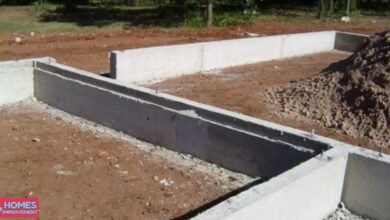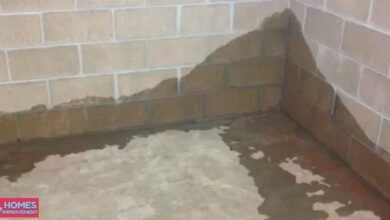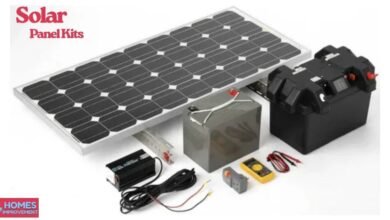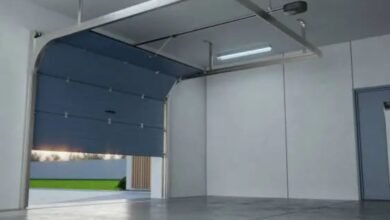Sump Pump Installation Tips Every Homeowner Should Know

Basement flooding is more than just an inconvenience — it can cause long-term damage to your home’s structure, flooring, and valuables. A sump pump is a powerful tool designed to protect your property by removing excess water before it causes issues. Whether you live in a high-rainfall area or just want peace of mind during storms, having a sump pump is a smart move. It keeps your basement dry, helps prevent mold growth, and reduces costly repairs. For homeowners focused on protecting their investment, it’s a must-have.
However, owning a sump pump isn’t enough — proper installation plays a key role in how well it performs. From selecting the right location to avoiding beginner mistakes, each step matters. Many homeowners try DIY setups but miss critical details. In this guide, we’ll share expert sump pump installation tips every homeowner should know to ensure long-term safety and performance.
Why Every Home Needs a Sump Pump
A sump pump is essential for homes that face water drainage or basement flooding issues. Whether you live in a rainy climate or have a house built on a low-lying area, this small device can save you from major water damage. A properly installed sump pump helps redirect water away from your home’s foundation and keeps your basement dry. It provides peace of mind during heavy rains and protects against mold, mildew, and structural weakening. Many homeowners overlook this equipment until disaster strikes. However, being proactive can help you avoid thousands of dollars in repair costs. Investing in a sump pump is not just a fix — it’s a protective measure that adds long-term value to your property.
Benefits of Installing a Sump Pump at Home
Installing a sump pump offers multiple benefits that go beyond just keeping your basement dry. It’s a proactive step toward protecting your home’s structure, air quality, and overall value. Especially in areas prone to heavy rain or poor soil drainage, a sump pump acts as a first line of defense. By removing excess groundwater, it prevents costly flooding, mold growth, and foundation damage. Many homeowners also appreciate the peace of mind it brings during stormy seasons. Whether you’re planning to stay long-term or preparing to sell, this device adds long-term value to your property.
Key Benefits:
- Prevents basement flooding and water damage
- Reduces risk of mold, mildew, and musty odors
- Protects the foundation from long-term moisture issues
- Enhances indoor air quality by keeping spaces dry
- Boosts resale value in water-prone areas
- Provides peace of mind during storms and heavy rainfall
- Requires low maintenance and operates automatically
Sump Pump Installation Process – Step-by-Step Guide
Installing a sump pump might seem like a tough job, but with proper planning and the right tools, homeowners can manage it themselves or better understand what a professional is doing. A well-installed sump pump ensures reliable drainage and long-term protection against water damage. The key is to follow each step carefully, from choosing the right spot to connecting the discharge line properly. If done right, your sump pump will activate automatically when needed and keep your basement dry for years.
Step-by-Step Installation Guide:
- Choose the Lowest Spot:
Select the lowest point in your basement where water tends to collect. - Dig the Sump Pit:
Use a jackhammer or shovel to dig a pit deep enough to fit the sump basin. - Place the Basin:
Insert the basin into the pit and add gravel around it for stability. - Install the Pump:
Set the sump pump inside the basin and ensure it’s level and secure. - Attach the Discharge Pipe:
Connect a PVC pipe to the pump and route it away from your home’s foundation. - Seal the Area:
Fill gaps around the basin and cover the top with a tight-fitting lid. - Test the System:
Pour water into the pit to ensure the pump activates and drains properly.
Common Mistakes to Avoid When Installing a Sump Pump
Even a high-quality sump pump can fail if it’s not installed correctly. Many homeowners try to handle installation themselves but overlook critical details that affect performance. One of the biggest mistakes is placing the sump pump in the wrong location, where it doesn’t catch the most water. Others forget to install a check valve, which allows discharged water to flow back into the pit — causing the pump to work harder than it should. Ignoring power backup options is another major error, especially during storms when outages are likely. To get the best performance, it’s essential to avoid these simple yet costly missteps.
Mistakes to Avoid:
- Installing the pump in a dry or incorrect spot
- Skipping the check valve, leading to backflow issues
- Using the wrong pump size or capacity for your home
- Not sealing the sump pit properly, allowing debris inside
- Forgetting to test the pump before sealing the installation
- Ignoring battery backup or alternative power sources
- Routing the discharge pipe too close to the foundation
What Does It Cost to Install a Sump Pump?
The cost to install a sump pump depends on factors like pump type, labor charges, and whether it’s a DIY or professional job. On average, homeowners spend between $500 to $1,500 for a standard installation. Submersible pumps tend to be more expensive than pedestal models but offer better performance. If additional plumbing, electrical work, or battery backups are needed, costs can increase. Knowing the breakdown helps homeowners plan and avoid surprise expenses.
| Item | Estimated Cost (USD) | Notes |
| Sump Pump (Pedestal) | $100 – $200 | Cheaper, easier to access for maintenance |
| Sump Pump (Submersible) | $150 – $400 | Quieter and more powerful |
| Sump Basin & Pit Materials | $50 – $100 | Required for installation base |
| Labor/Professional Installation | $300 – $800 | Depends on region and complexity |
| Backup Battery System | $100 – $300 | Optional but highly recommended |
| Additional Plumbing/Electrical | $100 – $300 | If not already in place |
Total Estimated Cost: $500 – $1,500+ depending on setup and choices
Sump Pump Maintenance Tips for Long-Term Use
Regular maintenance keeps your sump pump running efficiently when you need it most. Clean the sump pit every few months to remove dirt or debris that may block the system. Test the pump by pouring water into the pit and checking if it activates automatically. Ensure the float switch moves freely and isn’t stuck. This simple test can prevent bigger problems.
Also, check the discharge pipe to make sure it’s not clogged or frozen. If you have a battery backup, replace the battery every 1–2 years. Inspect the power cord for wear and keep it dry. A quick annual check by a plumber adds extra safety.
Mistakes to Avoid After Installation
Even after a successful installation, some homeowners overlook important maintenance and checks, leading to future failures. One common mistake is not testing the sump pump regularly — many only realize it’s not working when water starts flooding in. Others ignore debris buildup in the pit, which can clog the system. A blocked or frozen discharge line can also stop water from draining properly. Some skip adding a backup battery, making the pump useless during power outages. Neglecting these small yet crucial details can cause the system to fail when it’s needed most.
Common Post-Installation Mistakes:
- Not testing the pump periodically
- Allowing dirt and debris to collect in the pit
- No battery backup for power outages
- Blocked or frozen discharge pipe
- Ignoring the float switch movement
- Skipping annual professional inspection
How a Sump Pump Improves Home Value
Real estate professionals agree that homes with sump pumps often have a higher resale value. Buyers in flood-prone areas specifically search for properties with water protection systems in place. A well-installed sump pump signals that the home has been cared for and maintained responsibly. It shows the homeowner took preventive measures, reducing the risk of water-related problems. This can give you an edge in a competitive housing market. Not only does it protect your home while you live in it, but it also becomes a valuable feature when it’s time to sell. In short, a sump pump is both a defense mechanism and a smart investment in your property’s future.
Conclusion
Installing a sump pump is one of the best decisions a homeowner can make to protect their property from water damage. From reducing basement flooding to enhancing resale value, the benefits are clear. But to get the most out of your sump pump, it’s essential to avoid common installation mistakes, follow a step-by-step process, and perform regular maintenance. Whether you choose to DIY or hire a professional, installing a sump pump is a home improvement move that offers peace of mind, especially during unpredictable weather. Take action now to ensure your home stays dry, safe, and secure year-round.
FAQs
How do I know if my home needs a sump pump?
If your basement often floods or you live in a low-lying area with poor drainage, a sump pump can help prevent serious water damage.
Can I install a sump pump myself?
Yes, with the right tools and experience, you can install it yourself. But for safety and efficiency, hiring a pro is often a better choice.
How long does a sump pump last?
On average, a sump pump lasts 7 to 10 years. Regular maintenance can extend its lifespan and prevent early breakdowns.
What type of sump pump is best for basements?
Submersible sump pumps are best for basements due to their quiet operation and higher pumping capacity.
How often should I maintain my sump pump?
Inspect it every 3–4 months and perform full maintenance annually, especially before the rainy season or snowmelt periods.





